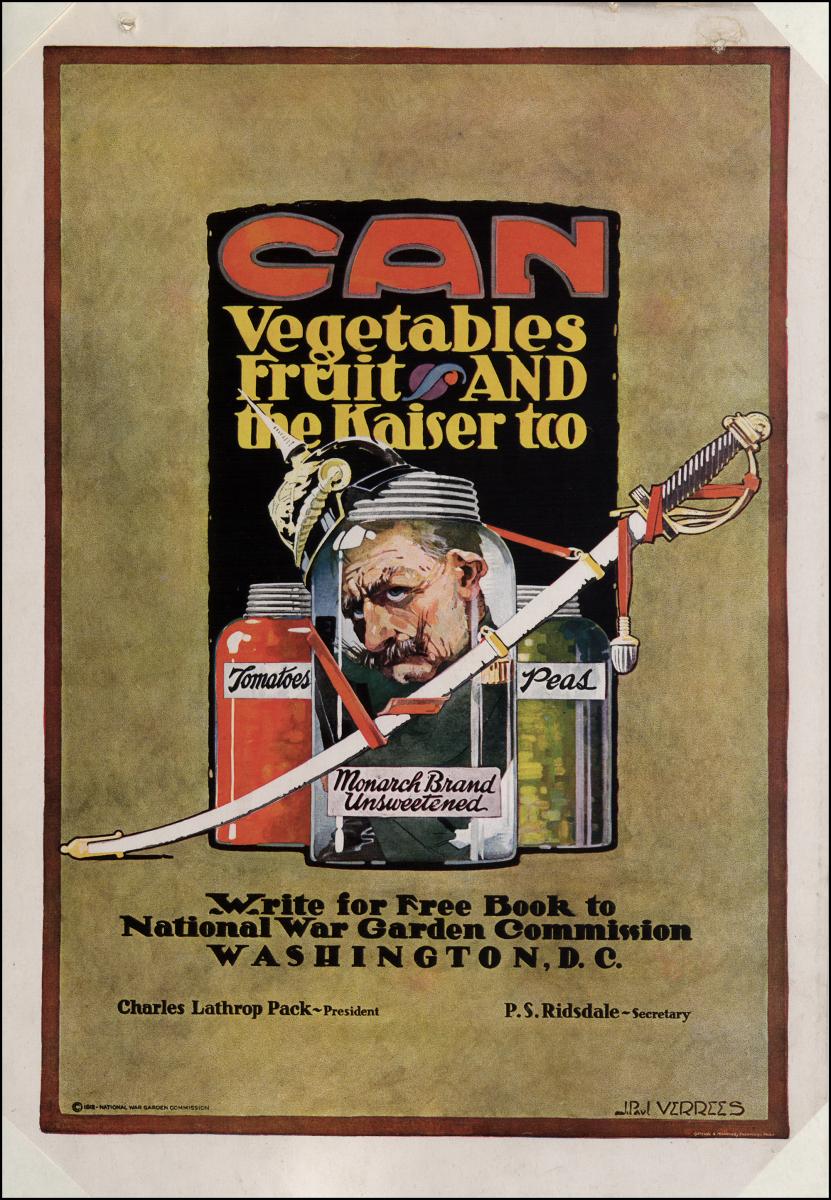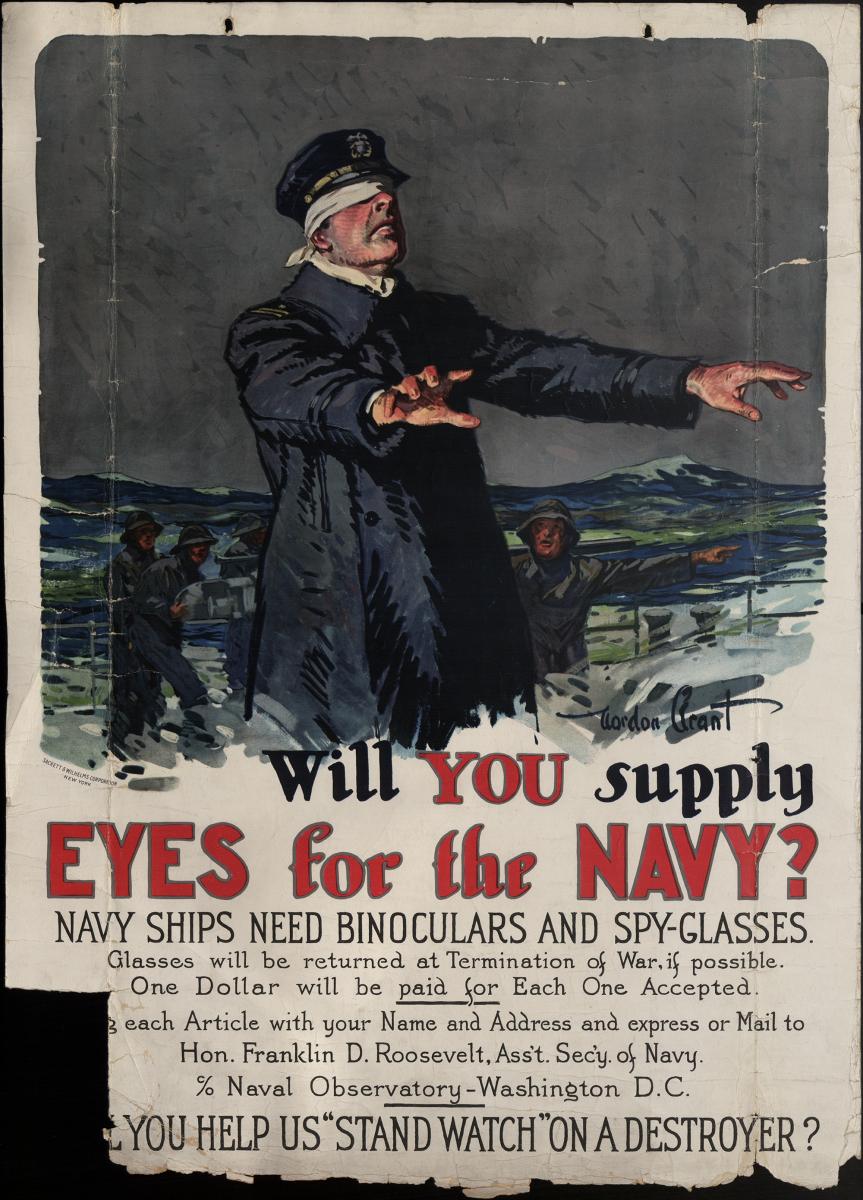2017 marks the 100th anniversary of the United States entering World War I. Until 1917, the United States had remained neutral.
That changed in April of 1917 when Congress voted to declare war on Germany. A few months later, in December, they declared war on the Austro-Hungarian Empire as well. The government did not take time to garner support for the war before as it was viewed as “over there.”
Once war was declared, posters were used to promote the war effort. These were designed to appeal visually and elicit an emotional response in casual passersby. They would feel obligated to do their part. Additionally, posters could easily be reproduced in a variety of languages and displayed in countless locations: sides of buildings, in workplaces, and re-printed in publications.
Posters inspired people to enlist, buy liberty bonds, grow and can their own food for the war effort, recycle metal, and reduce energy consumption. But the posters also made people fear the enemy, and imagine what might happen if they did not support the war.
The NAM collection has about 25 of these propaganda posters from World War I. Here are two examples:
The poster above was created by a Belgian soldier artist, J. Paul Verrees, for the National War Garden Commission. The note attached to the poster requested that it be placed “where it will be seen by those whom it may urge to conserve and preserve vegetables and fruits for winter use, thereby aiding to win the war.”
Canning fruits and vegetables at home relieved pressure on the canning industry that was needed to help preserve food for soldiers, as well as reduce rationing.
The Navy also sought glasses, binoculars, spyglasses, and telescopes once the United States joined the war. There was a shortage of supplies because, in the past, most of these glasses came from Germany, and some from France and Switzerland. Foreign supply was essentially closed without extra stock available in the United States.
Americans were urged to send in glasses to help with the war cause. Each was tested, and those that passed were shipped and distributed. Senders would receive a letter of thanks signed by then Assistant Secretary of the Navy Franklin D. Roosevelt and a check for $1, which would constitute the rental price, or in event of loss, the purchase price.
To view additional posters, visit the Hagley Digital Archives.


